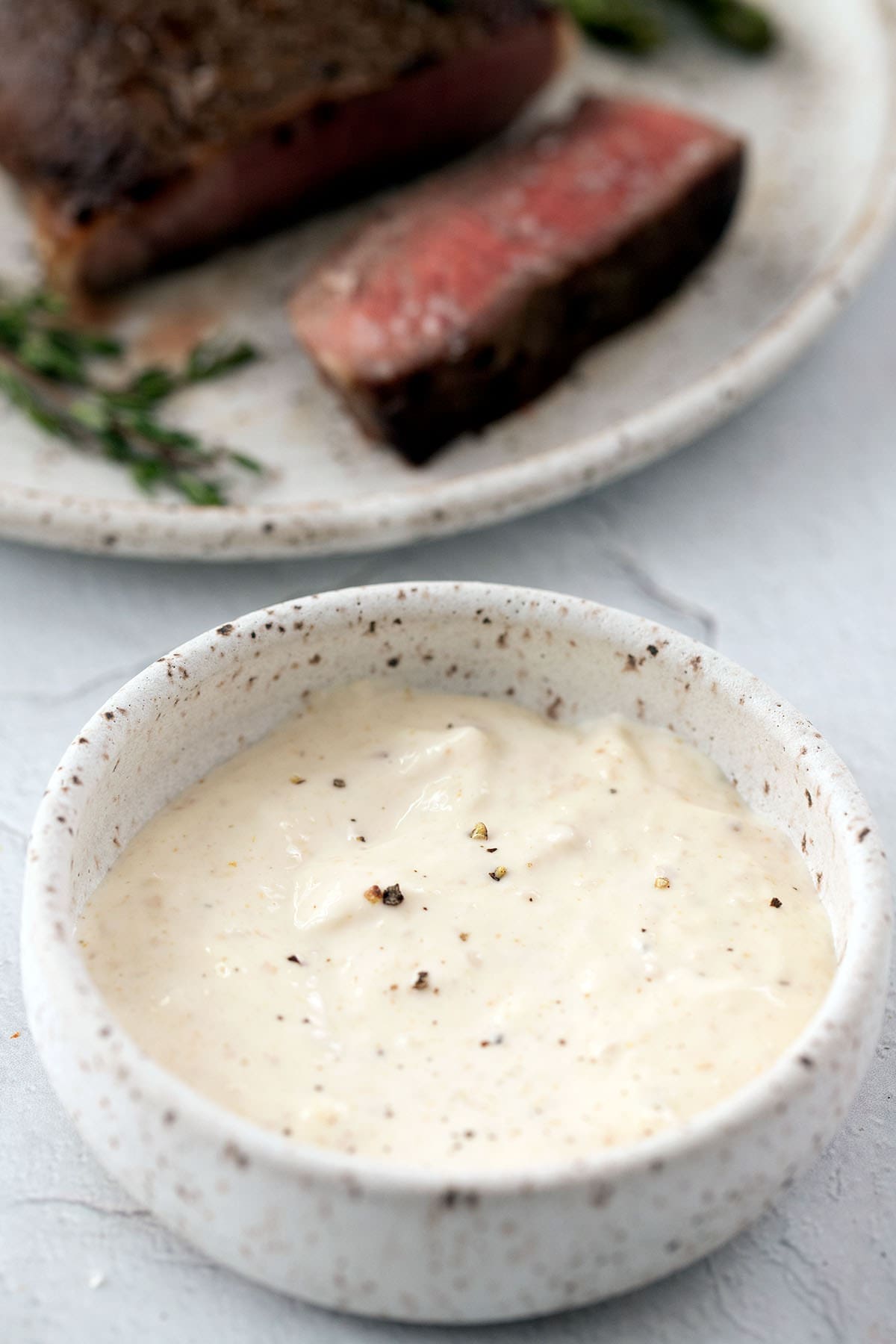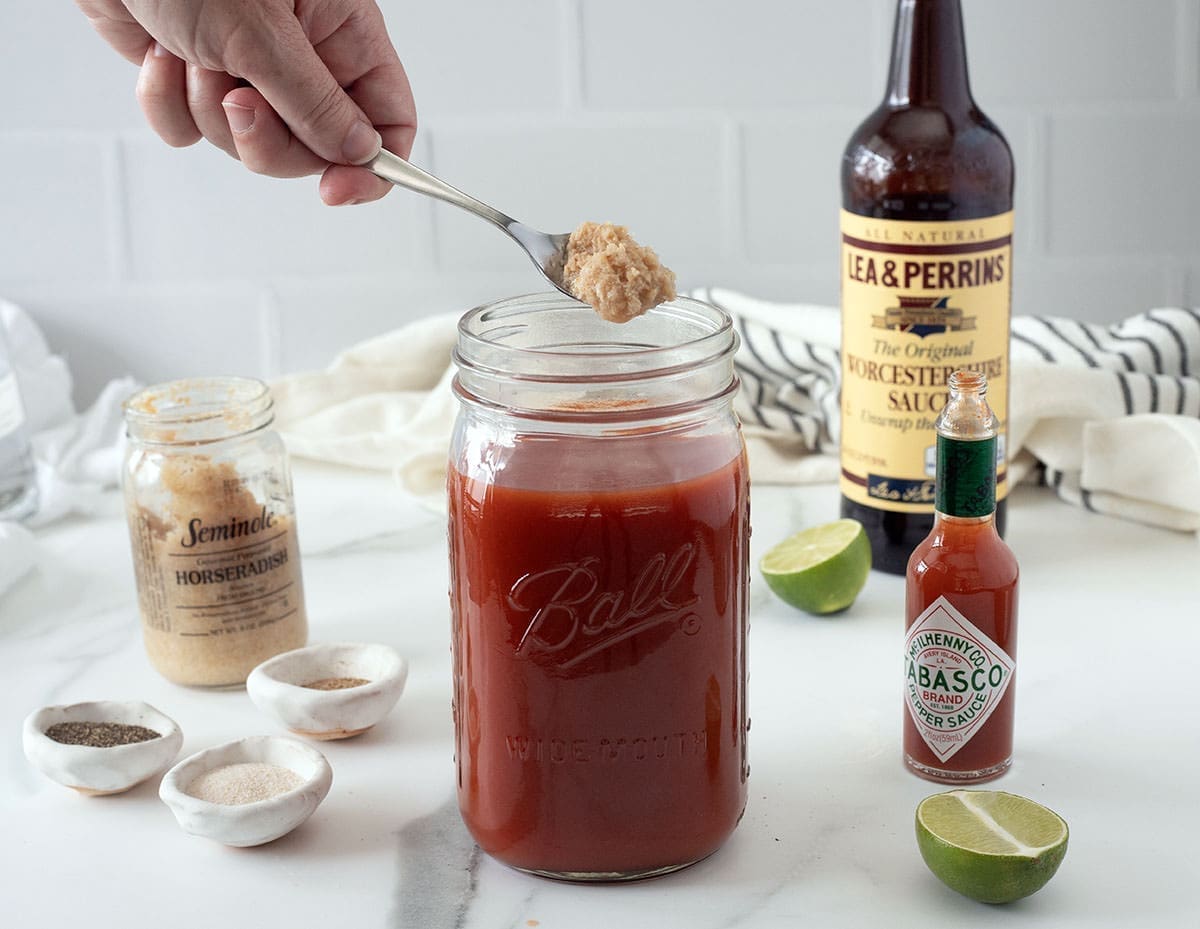Fresh horseradish, prepared horseradish and horseradish sauce are related but have very distinct differences. All three are versatile and zesty ingredients that add a spicy kick to recipes. But what sets them apart? Let’s check out the differences between prepared horseradish vs horseradish sauce vs fresh horseradish.
Fresh horseradish is both hotter and spicier than bottled prepared horseradish, which is pickled in vinegar, so if a recipe calls for prepared horseradish, use half the amount of fresh. When selecting, look for light brown, hard roots; avoid those that are green, moldy or spongy.

Prepared Horseradish vs Horseradish Sauce vs Fresh Horseradish
The main difference lies in their form and use: horseradish is the raw root itself, while prepared horseradish is a condiment made from the root, usually mixed with vinegar and other ingredients to enhance and preserve its flavor. Good horseradish sauce takes it a step further by adding mayonnaise and other creamy ingredients. All versions have the pungency of fresh horseradish root.
This refers to the actual plant, specifically its root. Horseradish is a root vegetable perennial plant belonging to the Brassicaceae family, which also includes mustard, wasabi, broccoli, and cabbage. The root is long, white, and has a strong, pungent and peppery flavor. It’s usually grated and used fresh or dried. A small amount goes a long way.
This is a condiment made from grated or ground horseradish root. It’s the main ingredient in horseradish sauce. The grated root is typically mixed with vinegar and salt, and sometimes other ingredients like cream, or sugar, depending on the desired flavor and consistency. The vinegar helps to stabilize the flavor and heat of the grated horseradish. Prepared horseradish is commonly used as a spread or condiment for meats, sandwiches, and salad dressings.

On the other hand, horseradish sauce takes the intensity of prepared horseradish and balances it with a creamy and sometimes tangy element. This creamed version typically combines prepared horseradish with sour cream, mayonnaise, or heavy cream, and can include other ingredients like dijon mustard (or spicy brown mustard), apple cider vinegar (or lemon juice) and black pepper to add complexity and depth.
The result is a very creamy horseradish sauce that is zesty yet smooth, with a heat that is present but not overpowering. While not a main ingredient of horseradish sauce, pickled mustard seeds would make a great addition to perk it up and add texture.
Horseradish cream sauce, with its milder and creamier profile, pairs wonderfully with seafood, poultry, and vegetables, offering a hint of heat without overwhelming the palate. A good homemade horseradish sauce should compliment the dish, not overpower it.

Horseradish in any form shines when used as a condiment for robust meats like Prime Rib or Smoked Beef Tenderloin. I serve it alongside Prime Rib at Christmas dinner every year to elevate our feast. I also use it the next day when making a Prime Rib Sandwich with the leftovers.
Horseradish can be found in all of these popular recipes – each will note when to use prepared horseradish vs horseradish sauce.

Things To Keep In Mind
Here are a few tips to keep in mind if handling fresh horseradish:
Be careful when handling fresh horseradish, as its strong vapors can irritate your eyes and nose.
The heat of the horseradish develops once it is grated and exposed to air. The vinegar stops this process. So, if you want a milder horseradish, add the vinegar immediately. For a hotter horseradish, wait a few minutes before adding the vinegar.
Fresh horseradish tends to be hotter and more flavorful than store-bought versions.
Now that you know the differences between prepared horseradish vs horseradish sauce, it’s time to start making the prepared horseradish recipe. Use it solo or to make horseradish sauce.
Andrew Zimmern Cooks: How to Prepare Fresh Horseradish
FAQ
Does fresh ground horseradish need to be refrigerated?
Does prepared horseradish lose its potency?
How strong is fresh horseradish?
Why is it called prepared horseradish?
What is the difference between fresh and prepared horseradish?
There are a few things to keep in mind when choosing between fresh and prepared horseradish. First, fresh horseradish is more expensive than prepared horseradish. Second, fresh horseradish has a shorter shelf life than prepared horseradish. Finally, fresh horseradish requires more preparation than prepared horseradish.
What are radish sprouts?
Radish sprouts are germinated radish seeds that have just begun to produce leaves. They are an excellent source of vitamin C and mineral salts, and have remineralizing, antiseptic and diuretic properties, which are also useful in preventing asthma.
What is prepared horseradish?
Prepared horseradish is a condiment that is made by mixing grated horseradish root with vinegar, salt, and pepper. It is often used as a spread or a dip. There are several differences between horseradish and prepared horseradish. First, horseradish is a root vegetable, while prepared horseradish is a condiment.
What is the difference between horse radish and horseradish?
Their difference lies mainly in how they are prepared, their flavor profile, and their nutritional value. Prepared horseradish is made by blending freshly grated horse radish root with vinegar, salt, and other spices such as mustard or garlic.
